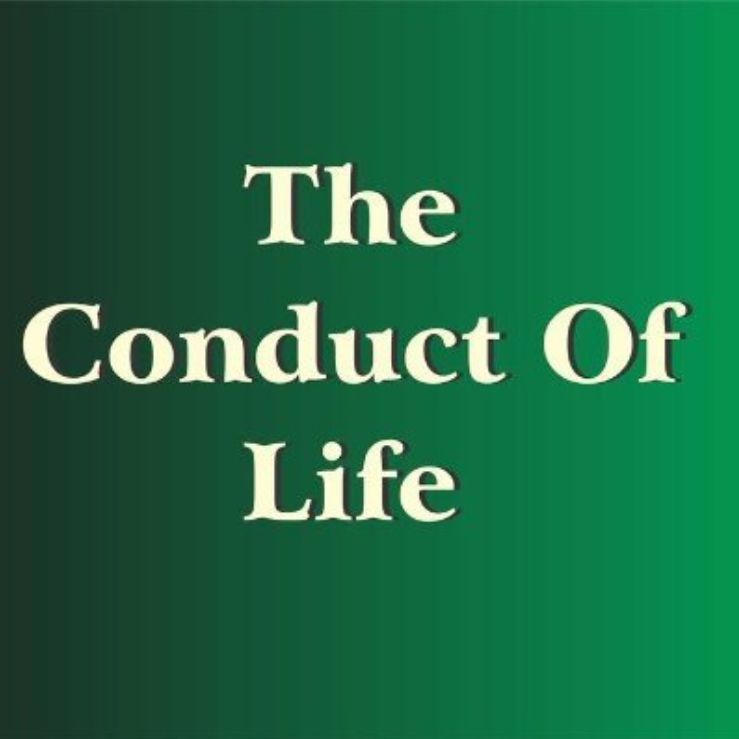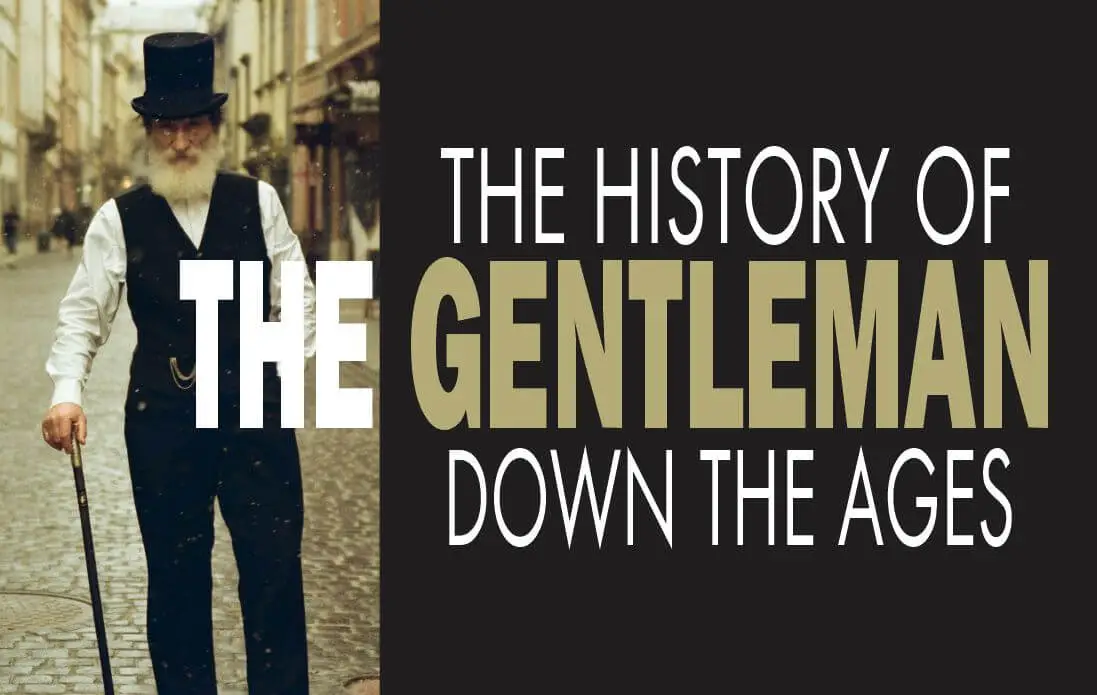Last updated on January 18th, 2024 at 05:59 pm
The history of the gentleman is a long one that has metamorphosed over time with its meaning changing along with social changes bordering on status and etiquette in society.
Becoming a gentleman in the Middle Ages hinged on prestigious birth and aristocracy, and behaviours are gauged on strict codes that regulate conduct.
The early gentlemen and the gentlemen of today have a lot in common which suggests that not much has been lost in the perception and meaning.
The purpose of this post, therefore, is to Xray the history of the gentleman which is considered an institution ideal for men to aim in their quest for personal perfection.
In the early times of the gentleman. this personal perfection makes up the acknowledgment of the responsibility that accompanies privileges (noblesse_oblige) in wherever one finds himself.
We will look at the early history of the gentleman with emphasis on the Renaissance and Victorian and modern eras.
This article will clear the alluring but elusive confusion that has trailed the idea of the gentleman and personal ideals of man up till this age.
The History of the Gentleman in The Early Era
In the Middle Ages, the term “gentleman” specifically denoted a landowner who belonged to the nobility class and held a high status in society.
As part of their social responsibilities, the nobility adhered to a set of manners when engaging with others.
These conduct rules hinged on a rigid chivalric code centered on principles of integrity and devotion.
As the 9th edition of Britannica xvii page 540b recorded – the late Professor Freeman said: “Early in the 11th century, the way of the gentleman as a new class was underway which was fully established by the conquest of England.”
Related: Becoming A Perfect Gentleman In A Crazy World
The class difference in the Middle Ages was predominantly between the noble in society – tenants in chivalry who included the earls, knights, esquires, barons, and those who were of low birth in society and included the ordinary citizens and people who could pass as slaves (franklins, peasants, burgesses, serfs, and villeins).
The word ‘gentleman’ connoted personal characteristics like generousity and compassion as late as the 1400s and not a class title as would be seen later in the following centuries.
However, around 1431, it was scantily used for landowners which included knights, esquires, householders (husbandmen), and yeomen.
The social class of the gentleman in England is equivalent to the French gentilhomme or noblesse (nobleman) which was hereditary from the ruling class and was rebelled against by the peasants.

The Gentleman in The Renaissance Era
In the Renaissance era (14th – 17th centuries), the concept of the gentleman shifted from noble birth and upper class or social status to behaviour and demeanor.
The Renaissance was preoccupied more with the revival of superior culture which accommodated the concept of the gentleman being modeled along the idea of the ancient Roman, “Virtus” which hinged on attaining morality.
The Renaissance gentleman became an ambiguous figure with ancient and contemporary qualities and was known in society.
They embodied refinement and accomplishment in different fields including education.
Also, chivalry as an ancient concept of politeness, honesty, and kindness was a major indicator of gentlemanliness.
Not everyone became a gentleman as noble birth, wealth, status and proximity to the king determined who achieved this status.
A person’s behaviour in situations played an important role in determining if a person would be regarded as a gentleman.
Related: How A Gentleman Treats A Lady: The 4 Basic Attitudes
The Renaissance era saw the rise of the movement of the humanist that emphasized individual achievement, education, and knowledge.
Just like every other term that covers many ideas, ‘the gentleman’ has wearied men in trying to give it a specific meaning.
Given its fluidity, it has eluded men from pinning a fixed definition on it because it is easier to recognize a gentleman than to define one.
In the 16th century England, having the title of a gentleman was a problem that the society was interested in because those who lacked the title frantically wanted to acquire it while those who had it guarded it jealously and resisted encroachment.
The Renaissance scholars approached the subject from the middle age point of view and this made them miss the point.
Commentators like Plato, Cicero, Thomas Aquinas, Dante, Justinian, and others who were interpreters of Renaissance Italy and France revered nobility, working it around the gentleman term and making it more ambiguous.
The dictionary from which they tag their meaning was worn out by time, which made the term doubly ambiguous contributing to the big confusion.
The three words that were predominant in their interpretation were ‘nobility’, ‘gentility’, and ‘generousity’.
These words can be applied in two situations, to mean excellence which can be used for both man and objects, and to a man’s position in society.
The confusion is worsened by jumbling all the meanings together which are similar in meaning but there was no agreement on how they differ.
Until the Renaissance era, nobility was like a one-word-fits-all term used to describe the status of a man who is above the common peasants by possessing some privileges conferred either by the king or by birth.
Nobility and Gentility Separated
All men who ranked above the commoners (plebeians) were referred to as noble. As the Renaissance age progressed, nobility was restricted to the upper ranks of baron and above.
This means that nobility is more of a title than personal qualities. Gentility which can be substituted with the gentry, by this time has replaced nobility as the term that distinguished the high and low in society.
Segar illustrated it thus:
“In England, we have divided our men into five categories: Gentlemen, Citizens, Yeomen, Artificers, and Labourers. The first principal of the gentlemen is the King, Prince, duke, marquesses, Earls, Viscounts, and Barons. They are the Nobility and the Lords. Next to these Nobilities are the Knights, Esquires and ordinary Gentlemen who could also be called Nobilitas minor.”
Gentility is the foundation on which all orders were built as it was used for the lowest position just above the commoners.
It was differentiated from nobility hinging on its inherited quality that distinguished commoners who had it.
Most of the Nobility first became gentlemen before priding themselves as lords and princes.
To properly make it clearer, nobility and gentility were not the same nor used interchangeably, even though they were, but the clear difference is that gentility was natural and was inculcated in birth or family upbringing, while nobility was political and civil with privileges.
Nobility also belonged to the son and not the father which can be lost through crime or choice.
Related: 8 Misconceptions about the perfect gentleman
Kings in their wisdom can confer a high rank to even worthless men out of sentiment or whatever reasons and this birthed the statement:
“The king cannot make a gentleman.”
Though class boundaries were almost not visible in the 16th century, as many England families became prominent, the meaning of gentility as being born gentle was not lost.
As Sir Thomas Smith defined gentlemen, they are those with blood and race, “their cloth made noble and known in society.”
These were the difficulties and confusion that trailed the defining of the words in the 16th century which also affect the student today who wants to learn what the word, gentleman means even to the educated man of the English Renaissance.
Victorian Era Gentleman
The idea of the gentleman has a speedy evolution through the three phases of the Victorian era which you will see shortly.
The evolution had a direct influence on the social, economic, and political pulses of Europe, especially England.
In the Victorian era, the concept of the gentleman was more refined and formally instituted as men were expected and attracted to education, good mannerism, and grooming.
This period saw the judgment of men according to their adaptability to social norms.
Also, the rise of the middle class happened in this era as opportunities were created for men to attain social and economic success and defocus them from the ancient privilege of royal status.
In the midst of these significant changes, qualities like education, etiquette, style, and affluence retained their value in the modern era.
The metamorphosis of the gentleman in the Victorian era is divided into three – the early, middle, and late Victorian eras
Early Victorian Era (1837-1860)
The Victorian-era gentleman as described in this article is a complex one but also an important part of the mid-Victorian ways of life.
It was not clear to the Victorians what to make of the gentleman concept or his defining characteristics, or even if training is required and how long it takes to become one.
But what remained obtruded was their curiosity about the subject and in becoming one.
By right of birth, members of the British Aristocracy were gentlemen even though it was clear and emphasized that only birth and political status were not enough to make a man a gentleman.
Industries and burgeoning trade marked the Victorian era and individuals and aristocrats alike lobbied to be designated as gentlemen owing to their wealth and status.
While the clergy, members of the parliament, and army officers were naturally recognized as gentlemen owing to their statuses, businessmen and respectable people in professions were not.
Gentlemanliness was not just a class designation during this time as was obtainable in the Renaissance era.
Related: 11 Differences Between The Everyday Man And A Perfect Gentleman
There was a personality and moral element to the concept which made it complicated for people in the Victorian era to grasp.
Many of the attempts to slam a simple definition of the concept of the gentleman were derived from chivalric moral codes from past eras.
Writers like Sir Walter Scott hinted repeatedly at the code of the gentleman. Also, John Ruskin wrote in “The Essence of a Gentleman,” that he is a thoroughbred or pure gene in which gentleness, empathy, and a disposition of kindness and clarity in images are part.
These qualities would pass today as a man who is purely emotionally intelligent and in control of himself.
Also, the renowned author, Charles Dickens was a writer of lowly origins who craved gentlemanly description because of his prowess in the writing occupation.
His work, ‘Great Expectations’, a disguised self-analysis contains a great deal of the concepts of the gentleman and why he’s eligible for the title.
There was a constant debate on the qualities that made a gentleman in the Victorian era.
Thackeray who was a good friend of Charles Dickens bickered over this matter as he insisted that a writer is not fit for the title of a gentleman.
However, it was agreed at the tail end of the century that the educated, especially in Latin in the elite schools with some other qualities were eligible to be addressed as gentlemen irrespective of their origin or birth.
These qualities included:
- Education: A gentleman in this era had the burden of being educated in such areas as philosophy, literature, medicine, and languages like Greek and Latin.
- Wealth: Another expectation for the Victorian gentleman was to be financially secure enough to sustain the gentleman’s lifestyle and status in society. He was not expected to be up and about looking for a job to do as he has enough inheritance, property, or wealth by virtue of marrying into wealth.
- Manners: Politeness, respect, and courteousness were qualities that could be identifiable in the gentleman of the Victorian era. He was expected to show these qualities to people irrespective of class and show the same behaviour in all his conduct in social situations.
- Style: He was also expected to have a particular style of fashion hinging on the trendy styles available that separate the affluent from the peasants. He was expected to dress in styles that sync with every occasion he attended.
Middle Victorian Era (1860-1880)
The concept of gentlemanliness began to shift as the Victorian era progressed with the rise of the middle class which gave more men the opportunity to aspire to gentlemanly status with no regard to their birth status.
This was possible with access to education and self-improvement instead of inheritance and proximity to power. This class revolution had its own sets of values that were made possible by the following qualities:
Entrepreneurship: Men began engaging in their own trades and careers to make their own fortunes which led to independent men springing up in society.
This earned them respect and they became role models to the younger men and other qualities that made them eligible for the status of a gentleman.
Sportsmanship: In the middle of the Victorian era, people became more interested in sports because of the liberty and freedom that took centre stage.
There was uncanny passion away from pleasing the royalty and scheming for a spot in the periphery of the royal court.
In this regard, a gentleman was expected to engage in one outdoor sport or another such as hunting, football, cricket etc.
Philanthropy: As wealth became more disseminated and men had more spending power, they engaged in philanthropy, helping others through charitable works and training in their areas of expertise.
Late Victorian Era (1880-1901)
Towards the end of the Victorian era, gentlemanliness had become firmly entrenched across all social levels with some further shift in what defined a gentleman.
This shift reflected the rapid changes that came about with freedom and pursuant to the self-development and personal ideals of the men.
Some of the newer qualities identifiable with the new dynamics in gentlemanliness are as follows:
Patriotism: The Crown was the centre of pride and patriotism in the British Empire and with its burgeoning growth, there was more demand for loyalty and patriotism to the Crown.
Scientific curiosity: Science and technology improved tremendously during this part of the Victorian era as it was gentlemanly to be a part of this field.
Stoicism: Being stoic was a good quality befitting of a gentleman and a way to show his masculine energy, especially in the face of trouble.
He is expected to remain confident, unruffled, and in absolute control of his emotions at any given time.
Conduct Makes the Gentleman
The gentleman is expected of some noble behaviours which are befitting of a respectable man in society. He is diligent in his business and willingly keeps his good name.
His deeds are virtuous and considerate which are innate and not prodded to exhibit. He is a gentleman because he longs to be one.
This was why it was not affixed to a man’s name as a title but was earned by behaviour which is becoming of a gentleman.
This brought about the famous reply of King James II of England to a woman’s plea to promote her son to the rank of a gentleman:
“I could make him a nobleman, but God Almighty could not make him a gentleman.”
This means that the King’s power only ends at making one a nobleman, and becoming a gentleman is a personality and cannot be made by someone else, not even God Almighty.
The Separation Between Classes
Classes in men could not be established in the whole of Europe in the early ages as could be seen in England where people’s names were denoted with title prefixes unlike in Germany and France.
The Industrial Revolution which brought about a trading surge in the 1700s metamorphosed the perception of the gentleman to include men in the urban professions which included lawyers, doctors, and businessmen.
The term has always stood out for respectable men in society who don’t just enjoy the term but also have responsibilities to fulfill.
It draws the thick line between the carefree everyday man and the prestigious man who is moving up the social ladder in society.
The Gentleman in Modern Times
Yet again, the concept of gentlemanliness took a further leap in modern times but shedding a little of the vintage gentleman qualities because of the changes brought about by several factors that upset the way people view life.
Vintage qualities like chivalry, honour, and courtesy are still identifiable with the modern gentleman but not as a priority.
The focus is rather on integrity, dignity, kindness, and respect for others and how responsible one is socially not taking to account their social or economic status.
The fluidity the times brought burnished the gentlemaN idea, making it more affordable to more people.
The idea emphasized more humane qualities that would rather be effeminate when under the eyes of the modern alpha male crusader.
Additionally, the meaning of gentlemanliness in the modern era is heavily influenced by cultural, religious, and social movements like feminism and masculinism.
The change is clearly captured in further definitions given especially by Encyclopedia Britannica, from the Middle Ages down to the Victorian era – one who bears the coat of arms without title, whose ancestors were freemen, a distinction of blood and birth, to mingle equally without discrimination in society.
In its encompassing and recent description, the gentleman is best defined by combining the meaning from the ages in a balanced form to make justice to it.
It is safe to say the modern man can think of gentlemanliness as self-respect, and intellectual and character refinement that effortlessly manifest pleasantly to keep people around him at ease.
From another angle, the modern gentleman treats especially women with respect and courtesy no matter the woman’s posture or social leaning.
He does not explore people’s vulnerability or take advantage, nor does he coerce others to act against their will, unless it is for their benefit.
Another meaning the gentleman has acquired recently is when a man is wealthy enough to squeeze out time to pursue other goals for leisure without profit being the driving force.
For instance, a doctor who ventures into farming as a hobby can be said to be a gentleman farmer.
Its clear meaning is not getting a salary for doing work or not depending on it for livelihood.
In recent times too, the term can be used in combination with ladies in formal expressions and addresses. “Ladies and gentlemen.”
Conclusion
The history of the gentleman reflects the evolving attitudes and values of society over the ages and across cultures.
From its origin as a title associated with land ownership, to its aristocratic leaning in the Middle Ages, to its formalization in the Victorian era, its perception and meaning have evolved along with social changes.
Today, the gentleman is clearly seen through the lens of personal character, social responsibility, empathy, compassion, and emotional intelligence rather than just a title or social status with privileges.
References:
Whatever Happened to the Gentleman?
The Democratic History of the English Gentleman
Pyo Merez (PsyD) is a distinguished adolescent and adult psychologist at the forefront of mental health advocacy.
With expertise in cognitive and developmental psychology, focusing on social relationships, cultural contexts, and individual differences, Pyo has dedicated his career to empowering adolescents and adults.
As a sought-after speaker and panelist, Pyo shares invaluable insights on issues affecting young people, contributing to a deeper understanding of mental health and well-being in today's society.


